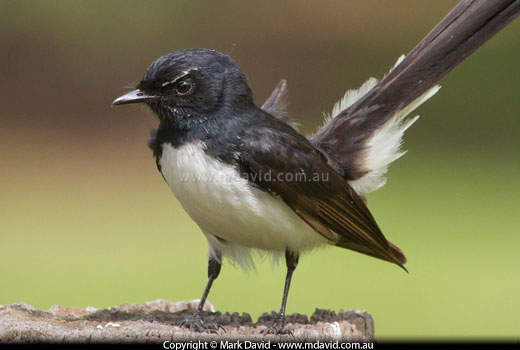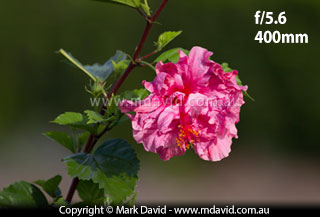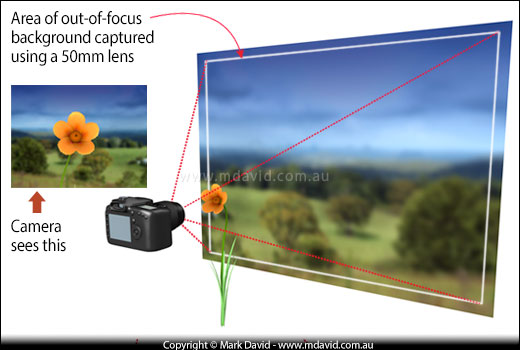
It’s a handy trick for making your subject stand out from its background. Here’s how it works

A combination of aperture setting and focal length allowed me to reduce the cluttered background in this shot to just a blur. The bird, by the way, is a Willy Wagtail.
A lot of people get confused about depth of field. To put it simply, depth of field is the distance between the closest and most distant areas in focus. You can use a small depth of field to blur a background or you can use a telephoto lens to blur the background. Or you can use a combination of both. So, if depth of field is controlled by aperture, then what is that telephoto lens doing? Does that also involve depth of field?


Switching between a 50mm lens and a 400mm lens makes a huge difference to the background, despite the fact that the aperture is the same.
Take a look at the two photos above. Both shots were taken with the same camera using the same aperture. The only difference was that I changed lenses. You’ll see right away that the background looks much softer in the 400mm shot.
Is the depth of field the same?
I would say it is! In both shots, the very same bits are in focus (the whole flower and none of the background).
So why is the background more out of focus in the 400mm shot?
Actually it’s not! What it is, is more ‘stretched’.

To understand what’s going on, have a look at the diagram above. We’re starting with the 50mm lens. A 50mm lens takes in a sweeping, wide expanse of background behind your subject. That background might be out of focus but there will be a lot of it in the frame.

Now look at the next diagram (above). This shows what the 400mm lens ‘sees’. Looking through the 400 is like looking through through a long pipe where you lose all your peripheral vision. The background is still out of focus but you’re only seeing a small patch of it, and that small patch fills the entire frame behind your subject.
Can you see now, what I meant when I said the 400mm (telephoto) lens ‘stretches’ a small patch of background in a way that makes it look softer?
It’s that stretching (or lack of stretching) which makes the backgrounds look so different. When you combine that effect with the depth of field controlled by your aperture, then suddenly you can make your subjects truly pop out of their background.
All it takes is your longest lens (longest focal length) combined with its biggest aperture (smallest f-number).
It’s not rocket science. What it is, is another cool trick you can use when you’re out taking photos.








